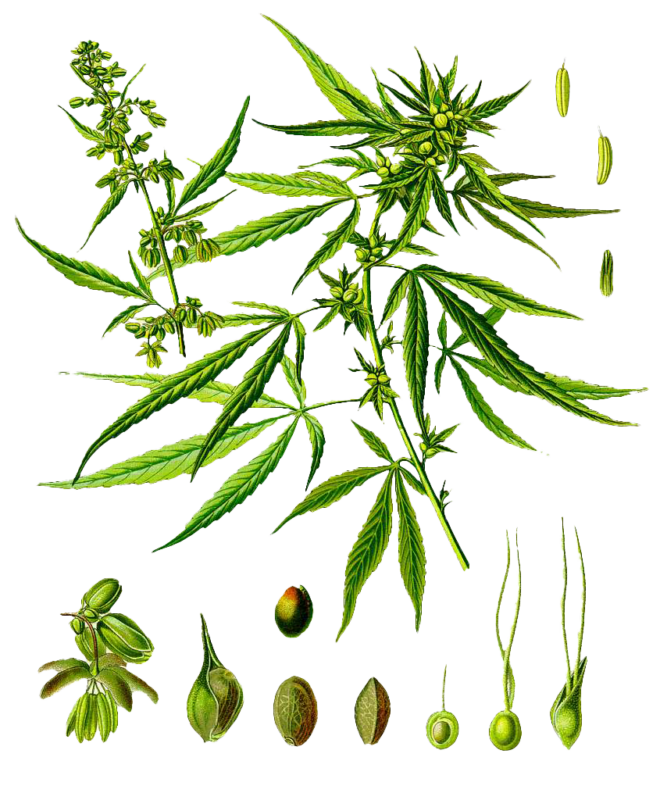Hemp as a paper
Visit Middle Agesthe emperor Charlemagne greatly promoted the hemp cultivationconsidered a strategic resource and a symbol of prosperity thanks to its many uses: clothing, ropes and sails.
At the same time, the Arabs learned the secret of the paper manufacture from Chinese prisoners of war. They perfected the technique of producing paper from hemp, which became an essential ingredient in the manufacture of paper. support essential for the dissemination of manuscripts the Koran, as well as for numerous other writings scientists (mathematics, astronomy, medicine, etc.), literature and philosophy. In the early eleventh century, they established their paper mills in Andalusia.
Printing the Bible of Gutenberg in the 15th centurywhich marked the beginning of theimprimerie would have been produced on hemp.

Hemp paper today
The production costs are around five times higher than for wood-based paper, because the infrastructure for the use of hemp is not yet developed. In most cases, hemp paper is used for specialised applications and not for mass applications such as printing paperwriting and packaging.
Harvesting the fibre hemp

Le retting is a key stage in the process of transforming the plant into a usable raw material. It involves macerating the hemp stalks in water so that the pectin releases the hemp fibres. This stage loosens the hemp fibres and makes them easier to extract. Once the retting process is complete, the fibres obtained are softer and ready to be used in the manufacture of textiles, ropes, paper and other products.

La decortication is the first stage after retting. It involves separating the hemp fibres from the woody part of the stalk. This process is generally carried out using special machines or by hand, depending on the scale of production. Dehulling produces long, supple fibres. These fibres are mixed with water to make paper pulp.
Hemp is a green hero
Did you know?
-
 Hemp is a very popular plant productiveIt has a higher yield than trees. It reaches maturity in a single season (between 4 and 5 months). Its fibres can be used to make various types of paperfrom books and magazines to newspapers and packaging. Compared with wood, hemp requires fewer chemicals for the production of hemp fibre. pulpThis reduces water pollution. What's more, its low lignin for whitening ecologicaloften without the use of harmful chlorinated agents.
Hemp is a very popular plant productiveIt has a higher yield than trees. It reaches maturity in a single season (between 4 and 5 months). Its fibres can be used to make various types of paperfrom books and magazines to newspapers and packaging. Compared with wood, hemp requires fewer chemicals for the production of hemp fibre. pulpThis reduces water pollution. What's more, its low lignin for whitening ecologicaloften without the use of harmful chlorinated agents.
-
 It is also one of natural fibres the most resistant in the world - one of the reasons for its longevity and durability. Hemp paper is resistant to decomposition and decay. yellowing. Hemp paper can be recycled to 8 timescompared with only 3 times for paper made from wood pulp. wood.
It is also one of natural fibres the most resistant in the world - one of the reasons for its longevity and durability. Hemp paper is resistant to decomposition and decay. yellowing. Hemp paper can be recycled to 8 timescompared with only 3 times for paper made from wood pulp. wood.
-
 Le hemp paper does not require the use of a whitening hemp does not contain any toxic substances or as many chemicals as wood pulp, because it can be bleached with hydrogen peroxide. This means that using hemp instead of wood to make paper would be less environmentally friendly. benefits significant environmental impact by putting an end to the creation of chlorine or dioxin.
Le hemp paper does not require the use of a whitening hemp does not contain any toxic substances or as many chemicals as wood pulp, because it can be bleached with hydrogen peroxide. This means that using hemp instead of wood to make paper would be less environmentally friendly. benefits significant environmental impact by putting an end to the creation of chlorine or dioxin.


